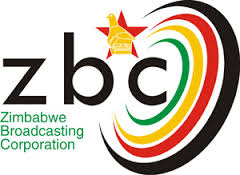Story by Tichaona Kurewa
HWANGE District played a pivotal role during the liberation struggle, as it offered several crossing points for liberation fighters to and from countries such as Zambia and Botswana.
As the country honours its liberation war heroes and heroines this August, our Victoria Falls-based reporter Tichaona Kurewa revisits the crossing points.
The spirit of oneness among Zimbabweans and Africans, in general, is the reason why the country won its independence in 1980.
Border-lying areas such as Hwange District were equally at the centre of the liberation struggle as transit points for inward and outward military operations.
ZIPRA forces on their way to and from Botswana as well as Zambia used a number of crossing points such as Simonga, Katombora, Chise and Kazungula.
“Our role was to do reconnaissance before recruits cross the Zambezi River into Zambia or before the cadres cross into Zimbabwe to the war front. We could move around to see if there were any Rhodesian forces around and report to our superiors accordingly. Some of the recruits could hide in houses in areas such as Victoria Falls before they cross into Zambia. So this is how important this district was during the liberation struggle,” explained war veteran, Cde Sibonisiwe Sibanda.
It was, however, not a stroll in the park as the use of these crossing points exposed the local communities to attack by the ruthless Rhodesian forces as chronicled by Cde Bishop Ncube.
“People in these areas were often brutalised by Rhodesiona forces, on one hand for not leaking information that the recruits had crossed into Zambia or Botswana for training, on the other hand for not leaking again that guerrillas had crossed into Zimbabwe to the war front. These people from these border areas loved us so much, and despite being harassed daily they remained resolute. The battles that took place in the district also inspired us making it important. You see most if not all fighters from the Southern Region crossed to Zambia or Botswana through Hwange District.”
Despite a number of physical barriers such as the mighty Zambezi River, mountain ranges and land mines planted by the Rhodesian Forces, liberation fighters still made it across the border for military training and back to the war front.
“We faced several challenges in these border areas because the enemy did not rest, it became more lethal and brutal to stop the liberation struggle but we remained resolute. Places like Hwange played more or less the same roles as the Chirundu area,” explained yet another war veteran, Cde Nelson Banda.
The story of the liberation struggle is also incomplete without mentioning the Wankie (Hwange) Battle of 1967, which also gave all and sundry the confidence and conviction that the enemy was not invincible. In independent Zimbabwe, Hwange District remains at the core of Zimbabwe’s economic activities, with electricity generation, coal production and tourism taking place in the area.




